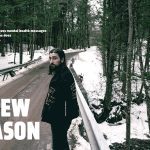Some thoughts on Hymn for Her, Brooklyn, and America for that matter
First, I want to say something about bluegrass music. In the few years since I started writing about American folk and roots music, I’ve discovered most people my age – those who aren’t musicians themselves and those not oddly inclined to obsess about such things – see a banjo and auto-designate whatever’s happening as “bluegrass music.” I’m only just beginning to wrap my head around this and give it some level of definition. Perhaps it’s just good marketing from Kentucky. Maybe it’s Steve Martin’s fault. Maybe the NAFA and AMA need to start some school programs which teach children that bluegrass : roots :: terrier : dog.
Only recently have I come to terms with the fact that it doesn’t matter what people call it. If they’re going to the shows and buying the records, connecting with the art on some level, everybody wins.
I’ll try not to make a face next time someone tells me something is bluegrass when, in fact, it’s some hybridized indie rock version of traditional roots music. That’s my commitment to those around me from here on out.
I bring this up because I recently found myself in the Red Hook neighborhood of Brooklyn, NY, visiting a good friend who felt inclined to take me out one night to see some music at the local bar. The bar included everything I remember loving about Brooklyn way back when I lived there. Odd things tacked on the wall (a sign reading “SUCK IT” in light bulbs only had one operational light bulb left), peculiar items making reference to a far-away rural lifestyle (in this case, a Big Buck Hunter video game in the back), feverishly tattooed bartenders with excess of facial hair, and somewhere in a place that makes little sense to do so, someone has placed a stage area of sorts for local music. In the case of the Bait & Tackle, the stage is in the middle of the room, facing somewhat diagonally. An angle just angular enough that the performers probably feel like they’re playing for the wall, but the audience doesn’t notice the difference.
The band was a husband-and-wife duo from Philadelphia called Hymn for Her. (Perhaps they’re not actually married, but I do know they share a living space and a child.) Their shtick, I was told before the show, is that they travel and reside in a silver Airstream trailer. This didn’t strike me as shtick-ish, since I’ve spent the last near-decade out west where that sort of thing seems about right for an Americana duo. I forget the cultural differences between east and west.
Which brings me to a momentary diversion from my tale.
I landed in Brooklyn at the tail end of a cross-country train ride. On Monday, Oct. 4, I and my Martin guitar, a bag full of books about things like the United States of Americana and Pete Seeger, and a Woody Guthrie t-shirt, boarded a train from Seattle to Atlanta. The first leg of my journey was the longest: Seattle to Chicago on the Empire Builder. It was a double-decker train which topped out at speeds of about 85 miles per hour through the flatlands of Montana (an old train man would explain to me how embarrassingly slow that is, in the context of the world’s trains). We cleared Washington, Montana, North Dakota, Minnesota, and Wisconsen before rolling into Chicago. Most of the people I met loved roots music and were fans of the labor movement. Many could appreciate the book I was reading about Seeger, or the one I’m moving to North Carolina to write about Zilphia Horton. It was an interesting immersion in the real America. The one I haven’t been living amongst for the past seven years since I stopped touring and dug my roots into Seattle’s Capitol Hill.
Forget what you hear on the news. America is mostly full of working class progressives who want to trust each other, love a good fiddle tune, church on Sunday, and think everyone deserves the same rights. The sort of reminder that’s encouraging to someone like me.
In New York City, I looked around at the ironic hipsterisms – the cowboy boots and country hairdos, piled on top of whatever in their closet was black and clean – and it felt at times like a show was being put on. A city awash in consumerism and commerce was toying with the imaginary romance of the rural. It would be easy to ask why those folks don’t just all move to Seattle and Portland, except that, sooner or later, they do. Many of them, at least. Those who don’t will float upstate, or to inland Massachusettes, down to Asheville (where I’m headed), or otherwise. For now they gather in their local gardens and greenspaces, building bonfires and barbecuing over 5×5 squares of peas and kale. Urban ruralism. Still trying to wrap my head around that.
New York City has changed. When I moved there from Portland, Ore., nearly a decade ago, I arrived three months before 9/11. It was just enough time to get a hang of the New York that pushed and shoved, that didn’t form lines outside of the subway train, that flicked you off and cursed and complained, and fried on the pavement like an over-easy egg, always looking down, ignoring the sky. It was a fascinating place unlike anywhere else I’ve ever been before or since.
Then 9/11 happened and we were all traumatized. People did wackadoo things like plowing their cars into pedestrians in midtown, and riding the subway with gas masks on because you just never know. The pendulum swung. Up in Union Square, there were song circles and sidewalk chalk diatribes about peace. The horseman statue at the foot of the square was draped in one of those One World flags. Faced with the inexplicable trauma of the aftermath of 9/11 – so much of which I still can’t find words for – I watched the city switch to a place of Ultimate Community.
Now they reclaim dilapidated railroad trestles and turn them into greenspaces. Now they grow mustard greens on the corner, brew beer on the roof, and listen to banjo music on the weekend. (Yes, I know banjo music has always been there, as have the mustard greens, but now it’s more standard and universal than odd and scattered.)
Enter Hymn for Her. From Philadelphia, their sound is somewhere between Rob Zombie and Old Crow Medicine Show. She plays a cigar box with one bass string and two standard guitar strings. Two pickups make it sound twice as big. He plays guitar and banjo, kick drum, hi-hat, and harmonica. They sing in unison mostly, with occasional harmonies and instrumental breaks. They play as hard as is humanly possible and come off far better live than on the CD they gave me.
This night, the room was about halfway full, mostly male, and bouncy as all hell. The level of enthusiasm over Hymn for Her’s particular approach to that whatever-it-is kind of music they do (which is decidedly not bluegrass) was akin to some of the punk rock shows I went to in college.
The next day, as the neighborhood poured into its community garden for a good old American potluck, around a fire (started from beer boxes – the wood collected was felled branches from the odd Brooklyn tree), children running around with plastic swords, dogs aplenty, and homemade star-shaped carrots, the excitement about that Philadelphia “bluegrass” band still leaked into assorted conversations. Like I said – whatever they want to call it doesn’t matter, as long as it sticks.




